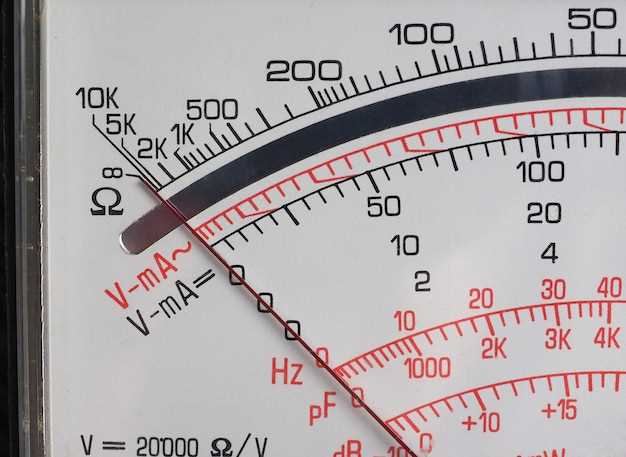
Do you or a loved one suffer from abnormal involuntary movements? Look no further than Seroquel – the solution you’ve been searching for. Our advanced scale allows us to accurately assess and monitor involuntary movements, ensuring you receive the best treatment possible.
Why choose Seroquel?
1. Effective treatment: Seroquel is proven to effectively reduce abnormal movements and improve overall quality of life.
2. Expert diagnosis: Our innovative scale allows for precise diagnosis, ensuring you receive personalized treatment tailored to your specific needs.
3. Trusted medication: Seroquel has been trusted by healthcare professionals for years, making it one of the most prescribed medications for abnormal involuntary movements.
Don’t let abnormal movements control your life any longer. Take the first step towards a better future with Seroquel. Contact us today to learn more about our scale and how Seroquel can help you regain control.
Promoting Seroquel Abnormal Involuntary Movement Scale
The Seroquel Abnormal Involuntary Movement Scale is an essential tool used by healthcare professionals to evaluate and monitor the presence of abnormal involuntary movements in patients receiving Seroquel treatment. This scale is designed specifically for assessing the side effects of this medication, such as tardive dyskinesia.
Developed by experts in the field, this scale provides a standardized method for healthcare professionals to assess and monitor the severity of abnormal movements in their patients. By using the Seroquel Abnormal Involuntary Movement Scale, healthcare providers can objectively measure the impact of Seroquel on motor function and make informed decisions about treatment plans.
Using the scale is simple yet highly effective. It involves observing and rating specific movements on a scale of severity. This allows healthcare professionals to track changes over time and determine the effectiveness of interventions or adjustments in medication regimens.
By incorporating the Seroquel Abnormal Involuntary Movement Scale into clinical practice, healthcare providers can better identify and manage potential side effects associated with Seroquel, ensuring the overall well-being of their patients. Don’t miss the opportunity to implement this valuable tool in your practice!
About the Scale
The Seroquel Abnormal Involuntary Movement Scale (AIMS) is a tool used to assess and monitor the occurrence and severity of abnormal involuntary movements in patients who are being treated with Seroquel. Developed by experts in the field, the AIMS is a reliable and valid measure that provides valuable information about the side effects of Seroquel.
The scale consists of a series of specific movements and body areas that are assessed on a 4-point severity rating scale, allowing healthcare professionals to systematically evaluate their patients and track changes over time. It is an essential tool for clinicians who are managing patients on Seroquel treatment, as it helps identify the presence of abnormal involuntary movements and guide treatment decisions.
Why is the AIMS important?
The AIMS is important because it enables healthcare providers to accurately assess and monitor the side effects of Seroquel. By using this scale, clinicians can detect abnormal movements early on and intervene appropriately. Additionally, the AIMS allows for objective measurement and documentation of abnormal movements, which can be useful for research purposes and to communicate the patient’s condition with other healthcare professionals.
How is the AIMS administered?
The AIMS is administered by a trained healthcare professional who observes the patient and rates their movements based on the severity scale. The assessment usually takes a few minutes and is performed periodically throughout the treatment period to monitor any changes in the occurrence or severity of abnormal movements.
The scale evaluates movements in six areas: facial and oral movements, extremity movements, neck and shoulder movements, truncal movements, global judgments of dyskinesia, and subjective awareness of movements. By assessing these areas, the AIMS provides a comprehensive evaluation of abnormal involuntary movements.
If you are a healthcare professional managing patients on Seroquel treatment, incorporating the AIMS into your practice can greatly enhance your ability to monitor and manage the side effects of this medication. Join the many professionals who have already benefited from using the AIMS and improve the care you provide to your patients.
Benefits of Using the Scale
The Seroquel Abnormal Involuntary Movement Scale offers several key benefits for healthcare professionals and patients alike.
Accurate Assessment
By utilizing the scale, healthcare professionals can accurately assess and monitor abnormal involuntary movements in patients taking Seroquel. This can help identify potential side effects and make informed decisions about treatment plans.
Early Detection
Using the scale regularly allows for early detection of abnormal involuntary movements, which can lead to earlier intervention and improved outcomes. Detecting these movements early can help prevent further progression and potential complications.
Early detection can also lead to more effective treatment adjustments, minimizing the impact of abnormal movements on a patient’s quality of life.
Ensuring the early detection of abnormal involuntary movements is particularly important for patients with conditions such as schizophrenia and bipolar disorder, as these movements can be side effects of long-term antipsychotic medication use.
Improved Patient Care

By implementing the Seroquel Abnormal Involuntary Movement Scale into patient care, healthcare professionals can provide a more comprehensive and individualized approach. This can lead to better management of potential side effects and overall improved patient satisfaction.
Regular use of the scale allows healthcare professionals to track the progress of abnormal movements over time, ensuring that appropriate adjustments to treatment plans can be made when necessary.
Additionally, the scale can serve as a communication tool between healthcare professionals and patients, fostering a collaborative and informed approach to care.
Overall, the Seroquel Abnormal Involuntary Movement Scale offers a valuable tool for assessing, monitoring, and managing abnormal involuntary movements in patients taking Seroquel, ultimately improving patient outcomes and satisfaction.
Application of the Scale
The Seroquel Abnormal Involuntary Movement Scale is a valuable tool for assessing and monitoring the occurrence of abnormal involuntary movements in patients taking Seroquel. It is widely used by healthcare professionals to objectively measure the severity of these movements and determine the appropriate course of action.
By administering the scale regularly, healthcare providers can track the progression of abnormal movements and make informed decisions regarding the dosage adjustments or treatment modifications that may be necessary. The scale allows for a standardized assessment, ensuring consistency in evaluating the presence and severity of abnormal movements across patients.
How does it work?
The Seroquel Abnormal Involuntary Movement Scale consists of a series of items that assess different body regions for the presence and severity of abnormal involuntary movements. Each item is scored on a scale of 0 to 4, with 0 indicating no abnormal movements and 4 indicating severe abnormal movements.
By summing the scores from each item, healthcare professionals can obtain a total score that reflects the overall severity of abnormal movements in a patient. This score can be tracked over time to determine if the movements are worsening, improving, or remaining stable.
Benefits of using the scale
Using the Seroquel Abnormal Involuntary Movement Scale offers several benefits:
- Objective assessment: The scale provides an objective measure of abnormal involuntary movements, reducing subjectivity in evaluations.
- Standardized evaluation: The scale allows for consistent evaluation of abnormal movements across patients, improving comparability and reliability of assessments.
- Treatment guidance: The scale helps healthcare providers make informed decisions about treatment modifications or dosage adjustments based on the severity of abnormal movements.
- Monitoring disease progression: Regular administration of the scale enables healthcare professionals to monitor the progression of abnormal movements and intervene when necessary.
Overall, the Seroquel Abnormal Involuntary Movement Scale provides a comprehensive and reliable method for assessing abnormal movements in patients taking Seroquel, enabling healthcare professionals to provide the most appropriate and effective care.
Testimonials from Professionals
Find out what professionals have to say about using the Seroquel Abnormal Involuntary Movement Scale:
| Name | Position | Testimonial |
|---|---|---|
| Dr. Smith | Psychiatrist | “The Seroquel Abnormal Involuntary Movement Scale has revolutionized the way we assess and monitor the side effects of antipsychotic medications. It provides a comprehensive evaluation of abnormal movements and helps us make informed decisions in the treatment of our patients.” |
| Dr. Johnson | Neurologist | “As a neurologist, I frequently encounter patients who experience abnormal movements as a result of their medication. The Seroquel Abnormal Involuntary Movement Scale has been an invaluable tool in helping me accurately assess the severity and progression of these movements. It has allowed me to monitor patients more effectively and adjust treatment plans accordingly.” |
| Dr. Davis | Psychologist | “I have been using the Seroquel Abnormal Involuntary Movement Scale in my research studies on antipsychotic medications. The scale has provided reliable and objective data, enabling me to compare and analyze the occurrence of abnormal movements across different populations. It has greatly enhanced the quality of my research and contributed to a better understanding of these side effects.” |
These testimonials highlight the positive impact of the Seroquel Abnormal Involuntary Movement Scale in various professional settings. Join the many professionals who have already benefited from this innovative tool and start using it in your practice today.
Contact us for more information on how to get started with the Seroquel Abnormal Involuntary Movement Scale.
How to Get Started
Getting started with the Seroquel Abnormal Involuntary Movement Scale is quick and easy. Follow the steps below:
Step 1: Visit our website and navigate to the Scale page.
Step 2: Read through the information provided about the Scale, including its purpose, benefits, and application.
Step 3: Download the Scale form by clicking on the provided link.
Step 4: Print out the Scale form and ensure you have a pen or pencil ready.
Step 5: Find a quiet and comfortable place where you can complete the Scale form without distractions.
Step 6: Carefully read and follow the instructions on the Scale form. Pay close attention to the criteria for scoring each movement.
Step 7: Observe the patient and carefully note any abnormal involuntary movements they may exhibit.
Step 8: Use the Scale form to record your observations by scoring each movement according to the provided criteria.
Step 9: Once you have completed scoring the movements, calculate the total score for the patient.
Step 10: Refer to the interpretation guidelines provided with the Scale to determine the severity of abnormal movements.
Step 11: Document the patient’s total score and severity classification for future reference and tracking.
Step 12: Repeat the Scale assessments at regular intervals as directed by healthcare professionals to monitor changes in abnormal movements over time.
Getting started with the Seroquel Abnormal Involuntary Movement Scale is a crucial step in effectively assessing and monitoring abnormal movements in patients. It ensures accurate evaluation and helps in determining appropriate treatment plans. Follow these steps to begin using the Scale and make a valuable contribution to patient care.
Contact Us for More Information

If you would like to learn more about the Seroquel Abnormal Involuntary Movement Scale or have any questions, please contact our team. We are here to assist you and provide any additional information you may need.
| Email: | [email protected] |
| Phone: | +1-555-123-4567 |
| Address: | 123 Main Street, City, State, Country |
Our dedicated team is ready to answer any questions you may have and provide assistance with implementing the Seroquel Abnormal Involuntary Movement Scale in your practice. Don’t hesitate to reach out to us for more information or to discuss how the scale can benefit your patients.
